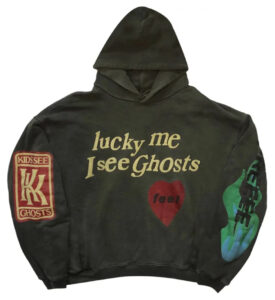Sony Pictures has officially announced a film adaptation of the critically acclaimed horror video game Until Dawn, sending waves of excitement through the gaming and horror communities. Known for its interactive, narrative-driven gameplay and cinematic storytelling, Until Dawn was released in 2015 and quickly became a favorite among horror enthusiasts. With its engaging characters, chilling atmosphere, and plot filled with twists and turns, it seems like a perfect candidate for the big screen. The announcement raises questions about how the game’s unique features will translate into a cinematic format, and whether the film can capture the same heart-pounding tension and emotional depth that made the game a modern classic.
The Plot: A Twisted Tale of Survival
The story of Until Dawn centers on a group of eight friends who reunite for a winter getaway in a remote mountain lodge, one year after a tragic event that took the lives of two sisters. As the night unfolds, the group becomes entangled in a web of fear and paranoia as they realize they’re not alone. From vengeful supernatural forces to a mysterious masked killer, the threats are layered and multifaceted, forcing the characters to make life-or-death decisions to survive until dawn.
The original game’s narrative structure was heavily inspired by classic horror films, particularly slasher movies, with plenty of nods to genre tropes. However, it also subverted expectations by weaving psychological horror and supernatural elements into its story. The game’s plot thrived on ambiguity, leaving players constantly guessing the true nature of the threats they faced. This complexity will likely be a significant focus in the film adaptation, ensuring it appeals to both longtime fans and newcomers.
From Interactive Storytelling to Linear Cinema
One of the defining aspects of Until Dawn was its interactive nature. The game featured a “butterfly effect” system where players’ choices directly impacted the story’s outcome. Decisions made in the heat of the moment could lead to drastically different fates for each character, meaning no two playthroughs were the same. This interactivity heightened the stakes and made the game deeply personal for players.
The challenge for Sony Pictures will be to adapt this choice-driven narrative into a linear film format. While a traditional movie doesn’t offer the same level of interactivity, it can still retain the tension and unpredictability by focusing on strong character development, intricate plotting, and a few surprising twists. The film could also explore the concept of moral ambiguity—one of the game’s key themes—by forcing characters to confront difficult decisions with no clear right or wrong answers.
The Psychology of Fear
Until Dawn excelled at exploring psychological horror, using fears, phobias, and mental trauma to unsettle both the characters and the audience. The film adaptation can dive deeper into this theme, presenting the characters’ fears not just as survival obstacles, but as reflections of their guilt, regrets, and unresolved emotions. By making fear a personal and pervasive force, the film can achieve the same emotional impact as the game.
Group Dynamics Under Pressure
The game portrayed the dynamics of the group in a way that felt authentic, with each character having unique motivations, relationships, and flaws. The film has an opportunity to expand on this, delving into how fear, distrust, and past grievances play out in high-stress situations. This could add layers of drama and tension, making the horror feel more grounded and relatable.
The Balance of Supernatural and Human Threats
One of the most intriguing aspects of Until Dawn was its blend of supernatural horror with human antagonism. The Wendigos, based on Native American folklore, were a terrifying supernatural force, while the masked killer served as a more grounded, slasher-style threat. Balancing these two elements in the film will be crucial to maintaining the original story’s unique flavor. By keeping the supernatural grounded in folklore and cultural context, the film can avoid falling into the trap of generic monster horror.
Casting: Breathing Life Into Iconic Characters
The characters in Until Dawn were brought to life by a talented cast, including Hayden Panettiere, Rami Malek, and Brett Dalton. Their performances helped create deeply memorable and relatable characters, making their fates genuinely impactful. For the film, Sony Pictures will need to assemble a cast that can capture the essence of these characters while bringing fresh energy to their roles.
•Sam (originally portrayed by Hayden Panettiere): As the group’s moral compass and de facto leader, Sam is a central figure in the story. Casting an actress who can balance vulnerability and strength will be key to making her character resonate with audiences.
•Josh (originally portrayed by Rami Malek): Josh’s complex and tragic arc makes him one of the most compelling characters in the game. An actor capable of portraying his psychological depth and volatility will be essential for the film’s emotional core.
•Mike, Jessica, Emily, and the others: The supporting cast should represent a mix of personalities and perspectives, from the resourceful and brave to the self-centered and reckless. Strong ensemble chemistry will be critical to recreating the group dynamic that defined the game.
Atmosphere: The True Star of the Show
The isolated mountain lodge and its surrounding wilderness were as much characters in the game as the protagonists themselves. The film will need to replicate this atmosphere of isolation, claustrophobia, and danger. Cinematography, sound design, and set design will play crucial roles in immersing the audience in the chilling world of Until Dawn. From snow-covered forests to abandoned mines, every location should evoke unease and amplify the sense of dread.
A Director to Match the Vision
Choosing the right director will be crucial for the success of the Until Dawn adaptation. A filmmaker with a strong grasp of both horror and character-driven storytelling will be needed to bring the game’s multifaceted narrative to life. Some potential directors include:
•Ari Aster (Hereditary, Midsommar): Known for his unsettling psychological horror and intricate character work, Aster could delve deep into the emotional and psychological layers of the story.
•Mike Flanagan (The Haunting of Hill House, Doctor Sleep): Flanagan’s ability to blend supernatural horror with poignant storytelling makes him an excellent candidate for adapting Until Dawn.
•Jordan Peele (Get Out, Us): Peele’s mastery of tension, social commentary, and unexpected twists could bring a fresh perspective to the adaptation.
Audience Expectations and Challenges
The film adaptation of Until Dawn faces high expectations, particularly from fans of the game. To succeed, it will need to balance faithfulness to the source material with the demands of a cinematic format. Key challenges include:
•Capturing the spirit of the game: Fans will expect the film to stay true to the game’s tone, themes, and characters, while also offering something new and exciting.
•Balancing scares and storytelling: The game’s success lay in its ability to combine jump scares with slow-building tension. The film must replicate this balance to satisfy horror enthusiasts.
•Appealing to newcomers: While catering to fans, the film must also be accessible to audiences unfamiliar with the game, ensuring that it stands on its own as a compelling horror story.
A New Dawn for Horror
The Until Dawn film adaptation has the potential to become a standout entry in the horror genre, blending the thrills of a slasher film with the depth of psychological and supernatural horror. With Sony Pictures at the helm, the project has the resources and expertise to bring this chilling tale to life. If executed well, the film could not only honor the legacy of the game but also introduce its gripping story to a whole new audience, cementing Until Dawn as a modern horror classic in both gaming and cinema.
No comments yet.








